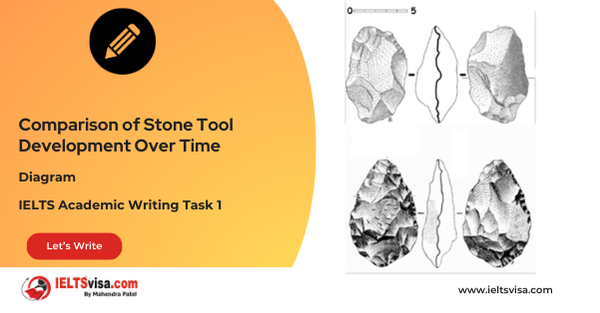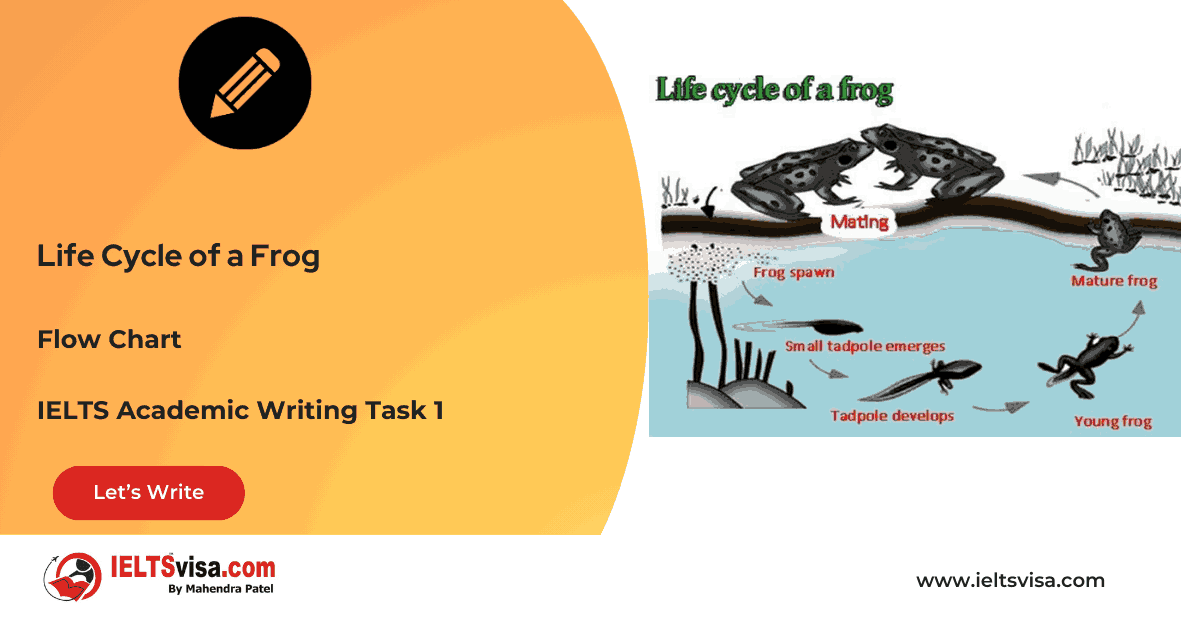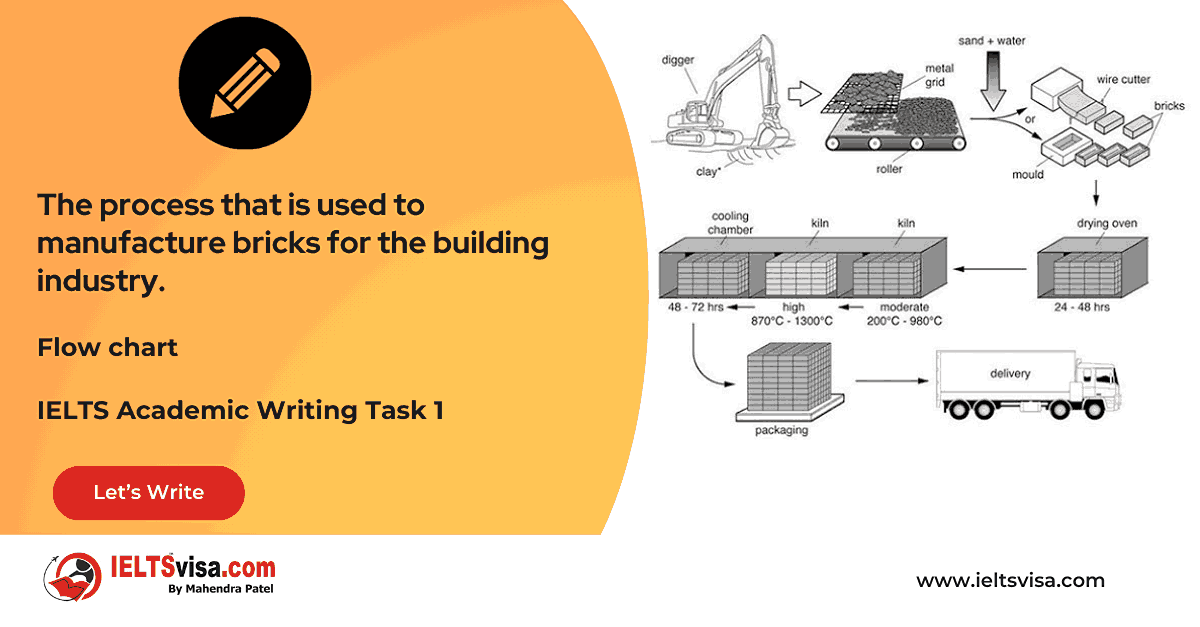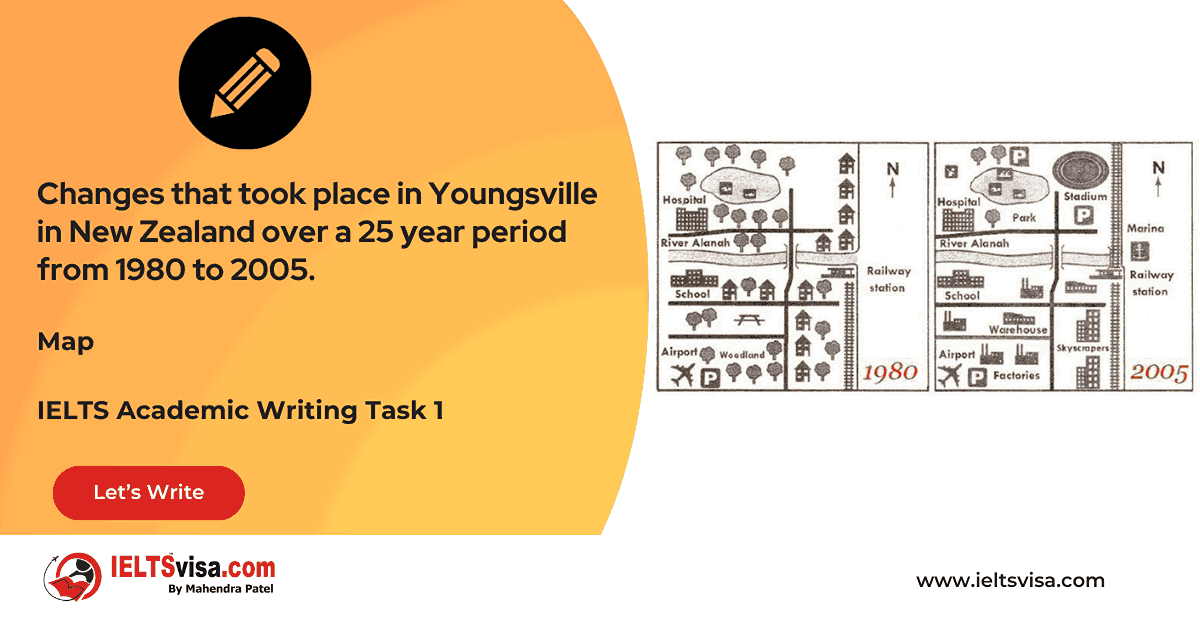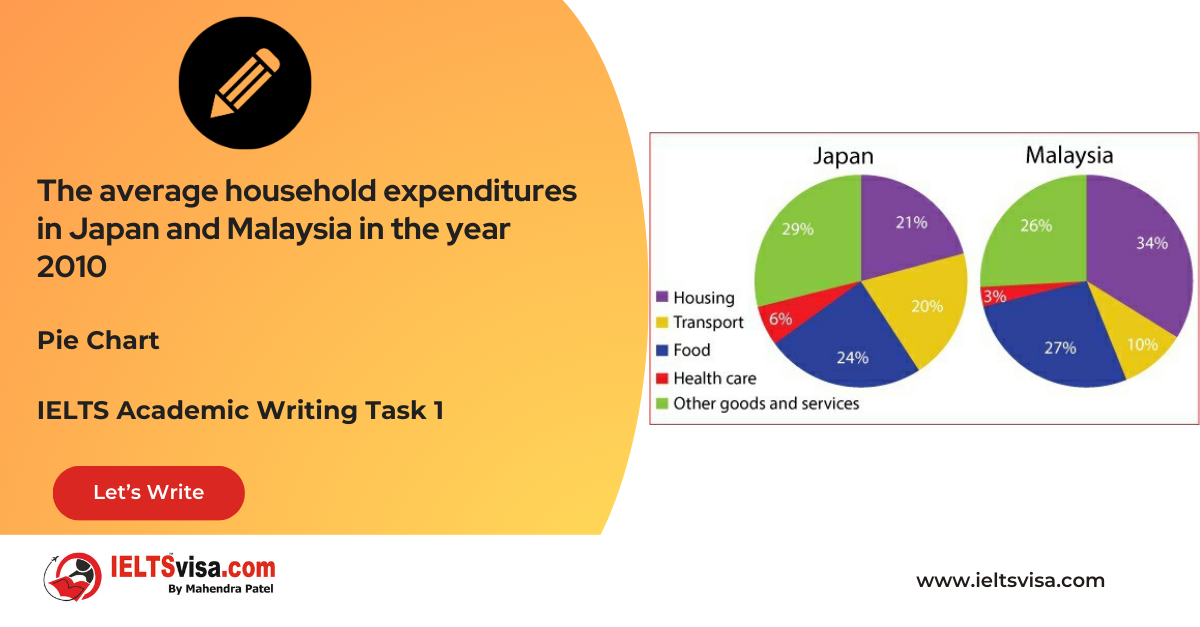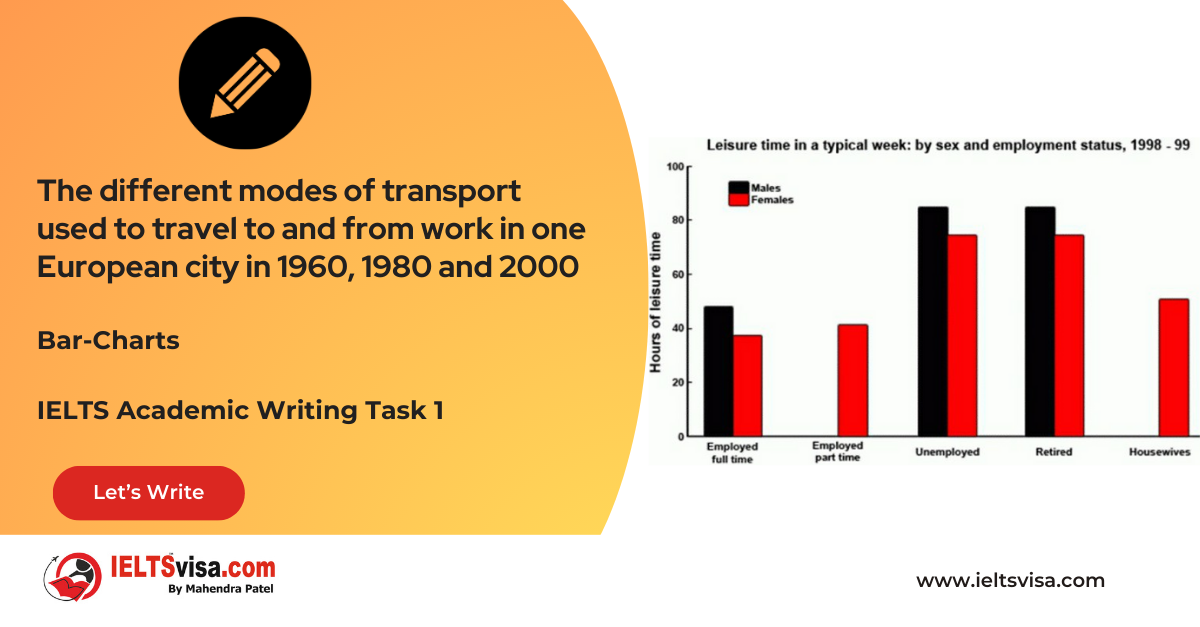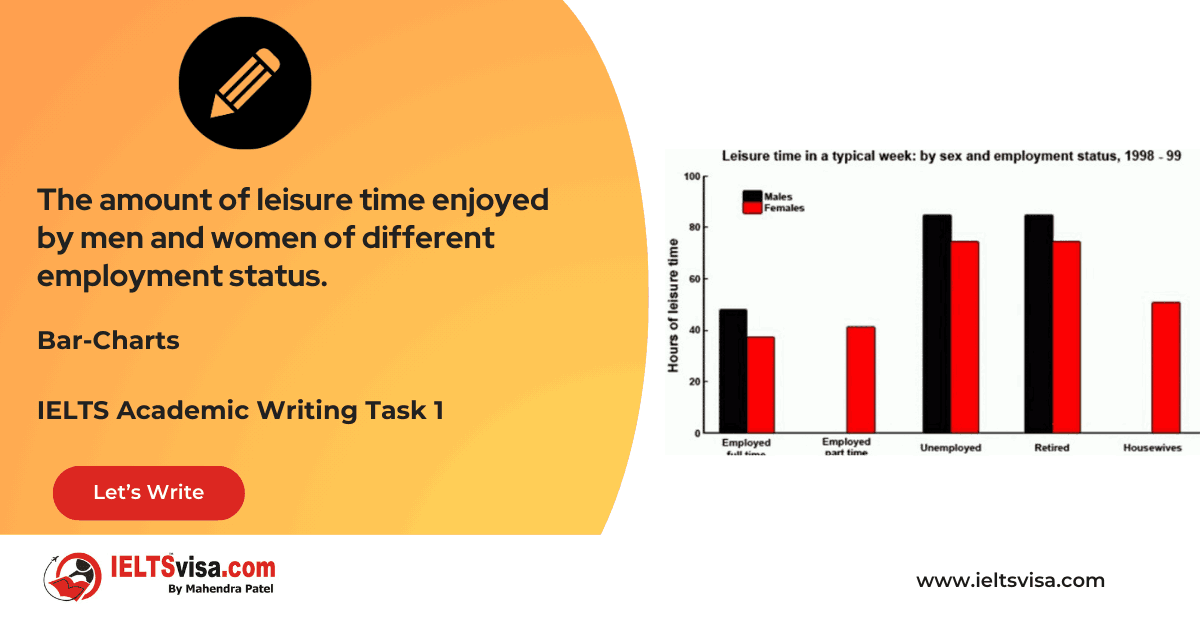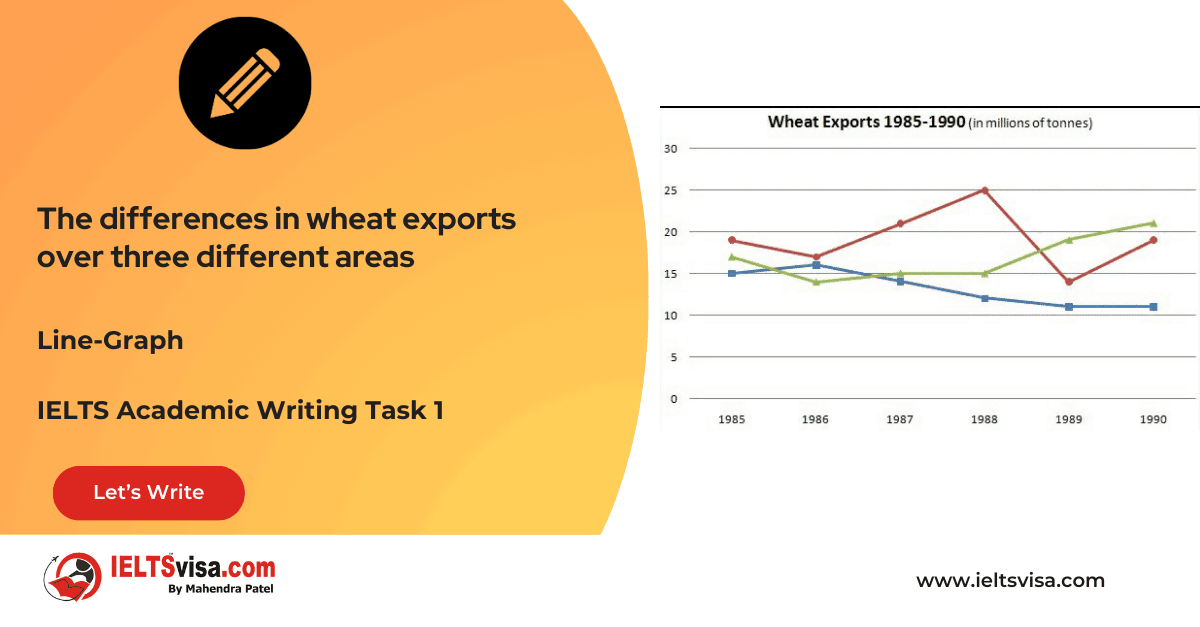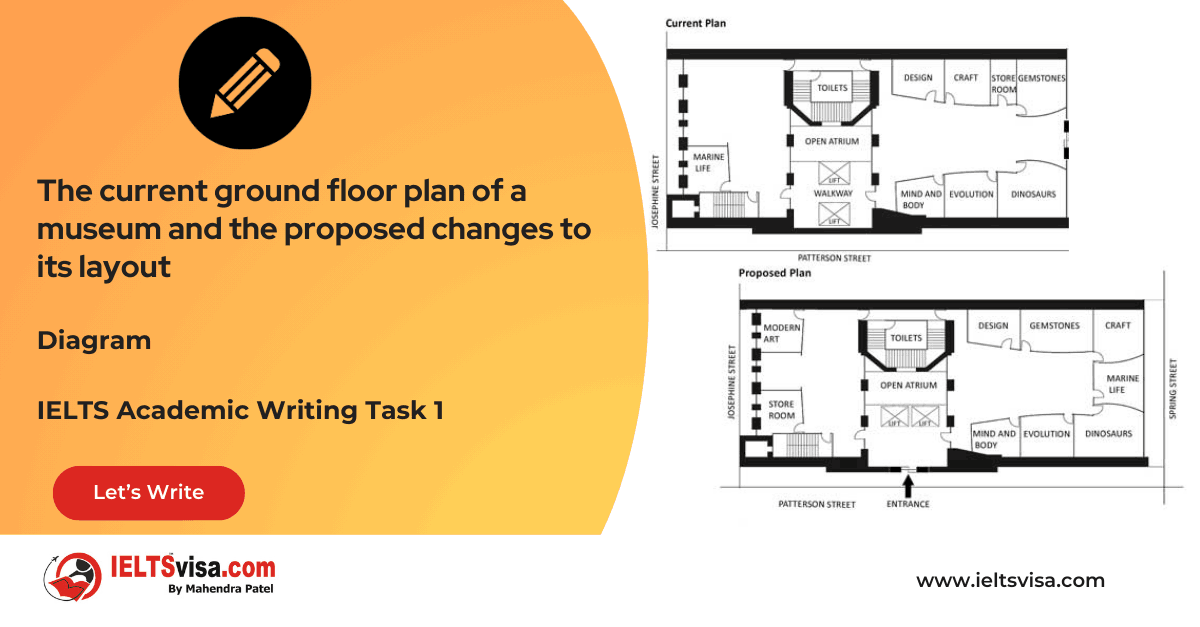Write sentences by using different tenses
MapsIELTS Academic Writing Task 1
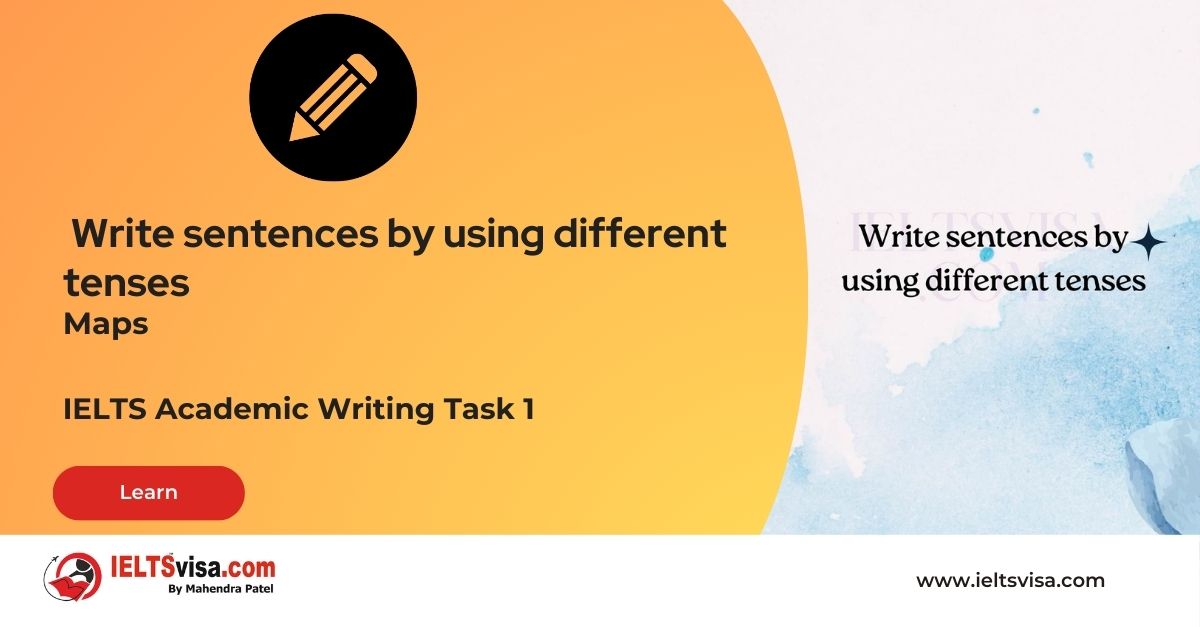
IELTS Academic Writing Task 1 – Maps often present candidates with maps depicting changes over time. To accurately describe these changes, it is essential to use different tenses effectively. By incorporating various tenses in your sentences, you can convey the timeline of events or developments depicted in the maps. In this article, we will explore how to use different tenses in your writing for IELTS Academic Writing Task 1 – Maps, providing examples and answers to help you excel in this task.
1. Present Simple Tense:
Use the present simple tense to describe permanent or ongoing features depicted in the maps. This tense is suitable for elements that remain unchanged over time.
Example:
- The river flows through the city, dividing it into two distinct areas.
- The river flows through the city, providing a natural waterway for transportation and scenic views.
- The park is located in the center of the town, serving as a gathering place for locals and visitors.
- The main road connects the residential area with the commercial district, facilitating easy commuter access.
- The mountain range dominates the landscape, offering breathtaking views and opportunities for outdoor activities.
- The university campus is situated in the northern part of the city, providing education and research facilities.
- The airport is located to the west of the city, serving as a major transportation hub for domestic and international flights.
- The shopping mall is a popular destination for shoppers, housing a variety of retail stores and entertainment facilities.
- The beach stretches along the coastline, attracting tourists and locals alike with its sandy shores and clear waters.
- The train station is centrally positioned, connecting the city with neighbouring towns and cities.
- The residential area consists of diverse housing options, including apartments, townhouses, and detached houses.
2. Present Continuous Tense:
Utilize the present continuous tense to describe temporary or current actions or developments in progress at the time the maps were created.
Example:
- Currently, a new shopping complex is being constructed near the city center.
- The city is undergoing extensive construction, with new residential complexes built in the outskirts.
- The park is being renovated, with workers planting new trees and installing additional benches.
- The main road is experiencing heavy traffic congestion due to road repairs and lane expansions.
- The university campus is expanding its facilities, with a new building under construction to accommodate the growing student population.
- The shopping mall is currently undergoing a renovation project, with sections temporarily closed for refurbishment.
- The beach is bustling with activity as tourists and locals enjoy sunbathing, swimming, and playing beach volleyball.
- The train station is undergoing platform upgrades to improve passenger accessibility and safety.
- The residential area is witnessing increased housing development, with new apartment complexes and townhouses being constructed.
- The airport is experiencing a surge in flight operations, with planes taking off and landing frequently.
- The city center is bustling with shoppers and pedestrians, street vendors setting up their stalls and cafes serving customers.
3. Past Simple Tense:
Use the simple past tense to describe specific events or changes that occurred at a definite point in the past.
Example:
- 2010 a new bridge was constructed to connect the city’s two parts.
- The old bridge was demolished and replaced with a modern one, improving the connectivity between the two neighbourhoods.
- The park underwent a major renovation in 2015, adding new pathways, playground equipment, and picnic areas.
- Last year, the main road was widened and repaved to accommodate the increasing traffic flow.
- The university campus expanded its facilities in 2010, constructing a new library and a state-of-the-art research center.
- The shopping mall underwent a complete makeover in 2018, with new architectural features and a wider range of retail stores.
- The beach experienced significant erosion during the storm last winter, resulting in the loss of sand and changes in its shoreline.
- The train station underwent a renovation project in 2012, adding more ticket counters and improving passenger facilities.
- The residential area witnessed a surge in population in the early 2000s, leading to the construction of additional housing complexes.
- The airport opened a new terminal in 2017, accommodating the increasing number of passengers and improving travel experience.
- The city center was revitalized in the 1990s, with historic buildings restored and new public spaces created.
4. Present Perfect Tense:
Incorporate the present perfect tense to describe actions or changes that started in the past but have a connection to the present or continue until the present moment.
Example:
- Over the years, the city has experienced significant population growth.
- The city has experienced rapid urbanization over the past decade, resulting in the construction of new residential complexes and commercial buildings.
- The park has undergone several improvements in recent years, including installing new benches, adding a children’s playground, and planting more trees.
- The main road has seen increased traffic congestion due to the growing population and ongoing urban development in the area.
- The university has expanded its course offerings and implemented new academic programs to cater to the evolving needs of students.
- The shopping mall has undergone multiple renovations and expansions to accommodate a wider range of retail stores and entertainment facilities.
- The beach has become increasingly popular among tourists and locals alike, with visitor numbers steadily rising over the past few years.
- The train station has undergone modernization, with the introduction of electronic ticketing systems and the renovation of waiting areas.
- The residential area has witnessed a surge in property prices as demand for housing has consistently outpaced supply in recent years.
- The airport has experienced steady growth in passenger traffic, prompting the construction of new terminals and the addition of more flight routes.
- The city center has seen significant revitalization efforts, including restoring historic landmarks and creating pedestrian-friendly zones.
5. Past Continuous Tense:
Use the past continuous tense to describe ongoing actions or developments that were happening at a specific point in the past.
Example:
- At the time of the survey, the city was undergoing a massive infrastructure upgrade.
- The city was undergoing extensive road construction work, with workers excavating and laying new asphalt in various areas.
- The park was being transformed into a community garden, with volunteers planting flowers and vegetables in designated plots.
- The main road was experiencing heavy traffic congestion due to ongoing lane expansions and the installation of new traffic signals.
- The university campus was expanding its facilities, with construction crews erecting a new student center and renovating existing buildings.
- The shopping mall was undergoing renovation, with sections of the mall temporarily closed off as workers upgraded the interior design.
- The beach was bustling with activity as families were enjoying picnics, sunbathing, and playing beach games under the sunny sky.
- The train station was being renovated, with scaffolding surrounding the building and workers repainting the platforms.
- The residential area was witnessing the construction of new housing complexes, with workers erecting frames and pouring foundations for new homes.
- The airport was experiencing a surge in flight operations, with planes taking off and landing frequently while ground crew members were loading and unloading luggage.
- The city center was bustling with shoppers and pedestrians, with construction crews working on sidewalk renovations and utility upgrades.
6. Future Tenses:
While the maps depict past or current information, it is sometimes necessary to discuss future developments or predictions based on the trends observed.
Example:
- It is expected that the city will continue to expand its public transportation system in the coming years.
- The city is set to undergo further expansion in the coming years, with plans for new residential areas and commercial districts on the outskirts.
- The park is scheduled to receive additional funding for renovations, including the creation of more recreational facilities and the enhancement of green spaces.
- The main road is expected to undergo a major upgrade, with widening projects and the implementation of advanced traffic management systems to alleviate congestion.
- The university has announced plans to establish new research centers and introduce innovative academic programs to meet the demands of future industries.
- The shopping mall is anticipating the arrival of international luxury brands and the introduction of cutting-edge technologies to enhance the shopping experience.
- The beach is projected to attract even more tourists in the upcoming tourist season, prompting local authorities to improve beach amenities and services.
- The train station is planning to introduce high-speed train services, reducing travel times and increasing connectivity to other major cities.
- The residential area is expected to witness further housing development with the construction of eco-friendly housing projects and affordable housing initiatives.
- The airport has outlined plans to expand its capacity and upgrade facilities, including the construction of new terminals and the addition of more direct flight routes.
- The city center is predicted to become a vibrant cultural hub, with investments in public art installations, pedestrian-friendly zones, and cultural events.
- By incorporating different tenses effectively, you can accurately convey the timeline of events and changes depicted in the maps. Remember to pay attention to the context and choose the appropriate tense to ensure clarity and accuracy in your descriptions.
Here is an example that incorporates different tenses in describing changes in a city park:
The city park has undergone significant transformations. In the past, it was a small green area with a few benches and a playground. However, over the years, it has been extensively renovated. Currently, the park features a large central fountain, beautifully landscaped gardens, and multiple recreational facilities. Moreover, ongoing construction indicates that further enhancements are being made, including the addition of a picnic area and an outdoor amphitheatre. It is clear that the park has evolved into a vibrant and attractive recreational space for the community.
In this example, the simple past tense is used to describe the initial state of the park. The present perfect tense indicates changes that have occurred over time. The present simple tense describes the current features. Lastly, the present continuous tense highlights ongoing construction and future developments.
By using different tenses appropriately, you can effectively convey the changes and developments depicted in the maps, showcasing your understanding of timeframes and enhancing the overall quality of your writing.
In IELTS Academic Writing Task 1 – Maps, the appropriate use of different tenses is crucial for accurately describing the changes and developments depicted. By incorporating the present simple, present continuous, past simple, present perfect, past continuous, and future tenses, you can effectively convey the timeline of events. Practice using different tenses in your descriptions, and pay attention to the context and accuracy. With consistent effort, you can enhance your ability to write clear and coherent sentences using different tenses in this task.








Our Books
Master IELTS Speaking Part 1
IELTS Writing Task 1 Book
IELTS Writing Task 2 Book
Practice IELTS Other Modules
IELTS Listening
The IELTS Listening test assesses how well you can understand spoken English in various contexts. It lasts about 30 minutes and is divided into four sections with a total of 40 questions. The listening tasks become increasingly difficult as the test progresses.
IELTS Academic Reading
The IELTS Academic Reading section assesses your ability to understand and interpret a variety of texts in academic settings. It is designed to evaluate a range of reading skills, including skimming for gist, reading for main ideas, reading for detail, understanding inferences, and recognizing a writer's opinions and arguments.
IELTS Speaking
The IELTS Speaking test assesses your ability to communicate in English on everyday topics. It lasts 11-14 minutes and consists of three parts: introduction, cue card, and a discussion based on the cue card topic.
IELTS General Reading
IELTS General Reading tests your ability to understand and interpret various types of texts. Here are some key areas and types of content you can expect to encounter in the reading section, along with tips for effective preparation.
IELTS Academic Writing Task 1
In IELTS Academic Writing Task 1, you are presented with a visual representation of information, such as graphs, charts, tables, or diagrams, and you are required to summarize, compare, or explain the data in your own words.
IELTS General Writing Task 1
In IELTS General Writing Task 1, you are required to write a letter based on a given situation. The letter can be formal, semi-formal, or informal, depending on the prompt. Here’s a breakdown of the key components to include in your letter
IELTS Academic Writing Task 2
In IELTS Academic Writing Task 2, you are required to write an essay in response to a question or topic. Here’s a guide to help you understand the essential elements of this task
IELTS Exam Tips
To succeed in the IELTS exam, practice regularly, familiarize yourself with the test format, improve your vocabulary, develop time management skills, and take mock tests to build confidence.
Grammer for IELTS
Grammar is the foundation of effective communication in English. Understanding tense usage, subject-verb agreement, and sentence structure enhances clarity and coherence in writing and speaking.
Vocabulary for IELTS
Vocabulary plays a crucial role in the IELTS (International English Language Testing System) exam, especially in the Speaking and Writing sections. Here’s an overview of why vocabulary is important and how it impacts your performance
RECENT IELTS SAMPLES QUESTIONS AND ANSWERS
Task 1 – Diagram – Comparison of Stone Tool Development Over Time
20:00 Start Pause Stop [df_adh_heading title_infix="IELTS Writing Task 1 Question" use_divider="on"...
Task 1 – Flow chart -Life Cycle of a Frog
20:00 Start Pause Stop [df_adh_heading title_infix="IELTS Writing Task 1 Question" use_divider="on"...
Task 1 – Flow chart -The process that is used to manufacture bricks for the building industry.
20:00 Start Pause Stop [df_adh_heading title_infix="IELTS Writing Task 1 Question" use_divider="on"...
Task 1 – Map – Changes that took place in Youngsville in New Zealand over a 25 year period from 1980 to 2005.
20:00 Start Pause Stop [df_adh_heading title_infix="IELTS Writing Task 1 Question" use_divider="on"...
Task 1 – Pie Chart – The average household expenditures in Japan and Malaysia in the year 2010
20:00 Start Pause Stop [df_adh_heading title_infix="IELTS Writing Task 1 Question" use_divider="on"...
Task 1 – Bar Graph – The different modes of transport used to travel to and from work in one European city in 1960, 1980 and 2000
20:00 Start Pause Stop [df_adh_heading title_infix="IELTS Writing Task 1 Question" use_divider="on"...
Task 1 – Bar Graph – The amount of leisure time enjoyed by men and women of different employment status
20:00 Start Pause Stop [df_adh_heading title_infix="IELTS Writing Task 1 Question" use_divider="on"...
Task 1 – Line Graph – The differences in wheat exports over three different areas
20:00 Start Pause Stop [df_adh_heading title_infix="IELTS Writing Task 1 Question" use_divider="on"...
Task 1 – Diagram – The current ground floor plan of a museum and the proposed changes to its layout
20:00 Start Pause Stop [df_adh_heading title_infix="IELTS Writing Task 1 Question" use_divider="on"...

